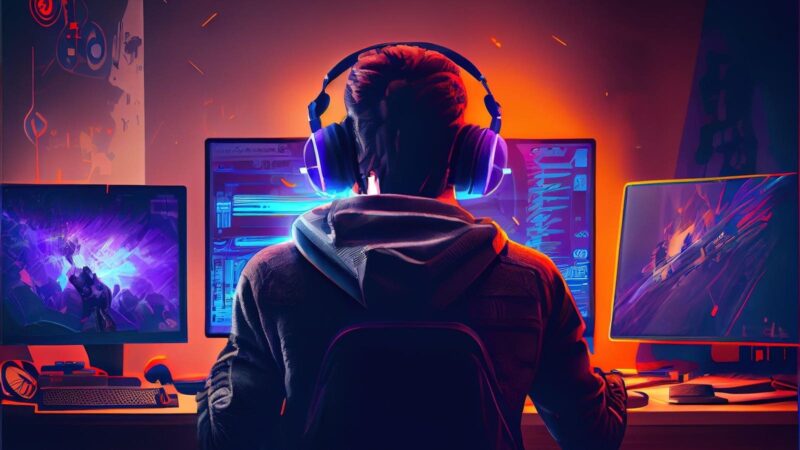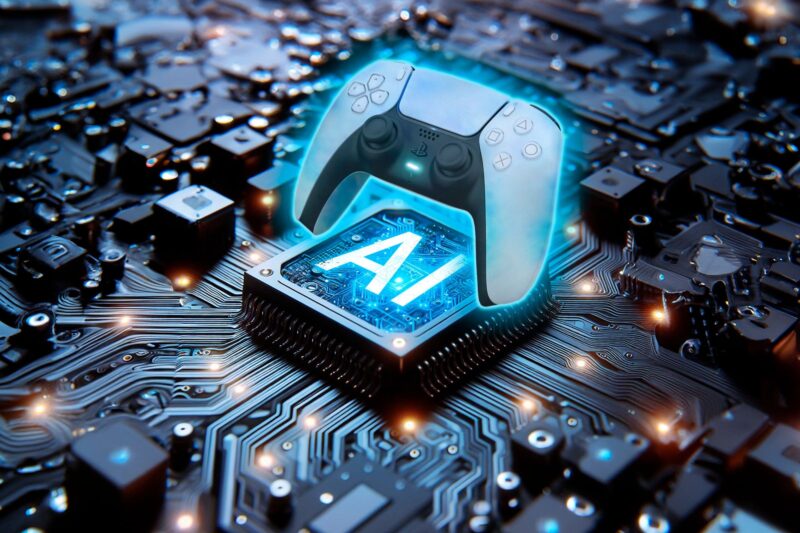The video game industry isn’t just evolving—it’s transforming. At the heart of this transformation is artificial intelligence. Once limited to powering enemy behavior or difficulty scaling, AI is now a foundational part of how games are conceived, built, and delivered. Developers, artists, writers, and even indie creators are leaning into AI tools not because it’s trendy, but because it’s unlocking capabilities that were unthinkable five years ago.
Behind every stunning open world, every clever NPC reaction, every personalized gaming moment—there’s likely an AI system working quietly in the background. But this isn’t about replacing human creativity. It’s about enhancing it, making the impossible possible for smaller studios, and allowing larger teams to build smarter, faster, and more reactive games.
How AI Embeds Itself in Modern Game Development

Video games are built on structure—coding frameworks, physics engines, visual assets, and rule systems. But the beauty of a great game lies in how it feels. AI now bridges these two worlds. It helps sculpt not just what a game is, but how it responds.
Take level design, for instance. Previously, designers would spend days or weeks manually adjusting terrain, lighting, and environmental detail to evoke the right emotion. Today, AI-assisted tools can generate entire maps based on a set of rules and preferences. The result? Worlds that feel handcrafted but are created in a fraction of the time.
Some core ways AI integrates into the game dev process:
- Asset generation: Textures, characters, and even animations can be drafted using AI tools like GANs or diffusion models, giving artists a strong starting point.
- Narrative branching: Games with complex decision trees now use natural language models to write variations of dialogue, based on player choices and tone.
- Automated testing: Instead of relying solely on QA testers, AI can run through games thousands of times, simulating real-world edge cases.
What’s key is that developers are no longer limited by what they can manually produce. AI doesn’t eliminate the need for creativity—it supercharges it.
Royal Casino and the New Age of Online Game Intelligence

One of the more nuanced evolutions in this space is how online gaming platforms are using AI to personalize and adapt the player experience.
Take Royal Casino. Unlike traditional casinos where static game rules apply to all players equally, Royal Casino uses AI to monitor engagement, spot patterns, and recommend personalized game types. AI even fine-tunes difficulty dynamically, ensuring players are neither bored nor overwhelmed.
This isn’t surface-level personalization. It’s deep behavioral learning. The platform’s backend continually analyzes player behavior—win/loss streaks, average session time, game preferences—and makes micro-adjustments that improve engagement without compromising fairness.
That level of adaptive intelligence is becoming a benchmark in the gaming industry. Whether it’s online poker, slots, or strategy-based games, AI now plays a role in how games are presented, how odds are structured, and how players are retained.
Smarter Characters, Richer Interaction
Gone are the days of NPCs (non-playable characters) spouting the same canned lines or repeating the same scripted paths. Modern AI is ushering in non-linear, personality-driven interactions.
In today’s top-tier RPGs and open-world games, NPCs aren’t just background decoration. They react to the time of day, the player’s previous decisions, even to ambient in-game events like weather or conflict. This realism is driven by reinforcement learning, which allows NPCs to adapt their behavior based on what’s worked in previous player encounters.
Here’s how that plays out in real time:
- Dynamic reactions: Say your character steals from a merchant in town. Later, the blacksmith down the road, aware of your actions, might charge you more or refuse to do business.
- Layered routines: Townsfolk follow daily schedules that change based on local events—market days, festivals, or battles in nearby regions.
- Evolving relationships: NPCs remember past interactions, altering future dialogue and decisions based on your morality or alliances.
This isn’t just more immersive—it’s more alive. These experiences wouldn’t be possible without the vast pattern recognition capabilities of AI.
AI as the New QA Assistant: Testing at Scale

Quality Assurance (QA) might not sound glamorous, but it’s where many games live or die. A game can have brilliant ideas and jaw-dropping graphics, but if it’s riddled with bugs or crashes, players walk away. Traditionally, QA has been labor-intensive, involving human testers grinding through thousands of scenarios manually.
Now, AI steps in with a better solution: mass simulation testing. Machine learning algorithms can run through every part of a game faster than human testers ever could. They explore corner cases, simulate odd behaviors (like trying to walk through walls), and even test performance under pressure—like hordes of enemies on-screen at once.
This means:
- Faster bug identification: AI flags broken quests, missing assets, or animation glitches early.
- Regression tracking: It detects whether a recent patch unintentionally broke something that used to work.
- Balancing data: AI can analyze how often players succeed or fail, offering feedback for difficulty tuning.
Not only does this save weeks of work—it also raises the quality bar before games reach consumers.
Procedural Worlds, But with Purpose
Players love sprawling open worlds. But designing them is a mammoth task. Procedural generation isn’t new, but AI is giving it a layer of purpose and polish that previous tools lacked.
Older procedural maps were often disjointed—random caves, repetitive forests, or barren landscapes. AI-enhanced procedural engines now learn from thousands of map samples and user behavior to generate worlds that make narrative and visual sense.
Consider this evolution:
- Then: Random terrain with no thematic flow.
- Now: Landscapes that match the story—eerie forests near haunted towns, lush valleys near peaceful villages, challenging terrain guarding rare items.
Moreover, AI tracks how players explore and where they get stuck. That feedback gets looped back into world generation, improving terrain layout or item placement on future builds.
Audio, Dialogue, and Expression—All AI-Supported

The emotional layer of gaming—voice, sound design, expression—has traditionally been labor-intensive. Hiring voice actors, coordinating localization, mixing soundtracks—it’s resource-heavy work. But AI is now streamlining those processes, offering support without compromising quality.
For instance:
- Voice synthesis: AI tools generate realistic voice acting that can be tailored for tone, emotion, and dialect. Great for indie teams who can’t afford large voice casts.
- Adaptive music: Composers use AI to score dynamic soundtracks that shift based on gameplay tempo or scene transitions.
- Facial animation: AI tracks spoken dialogue and auto-generates facial expressions to match voice tone—saving time in cinematic scenes.
These aren’t gimmicks. They’re tools that save money and increase polish, particularly in mid-budget and indie titles.
Leveling the Playing Field for Small Studios
Perhaps the most exciting shift AI brings to the industry is accessibility. What used to require a team of 50 developers can now be achieved by 3 or 4, thanks to AI.
An indie developer can now:
- Use AI to prototype game mechanics in Unity without writing complex scripts.
- Generate artwork or character concepts via prompt-based models.
- Localize content into multiple languages with AI translation tools.
- Auto-test gameplay loops with AI-based simulation.
- Upload demos to platforms like Steam, Itch.io, or Epic without expensive middlemen.
This democratization is leading to a golden age of variety. Expect more unusual, narrative-rich, or socially relevant games from unexpected corners of the world.
Creativity Enhanced, Not Replaced
AI isn’t taking over the industry. It’s offering something better: collaboration at speed. The best game developers aren’t outsourcing their vision—they’re using AI as an amplifier. Whether it’s smarter NPCs, deeper personalization, faster bug detection, or richer world-building, artificial intelligence is making game creation more efficient, inclusive, and imaginative.
The real question isn’t whether AI will shape the future of gaming—it already is. The question is how far creators are willing to take it.








